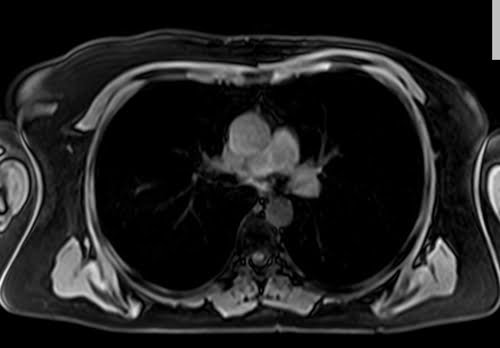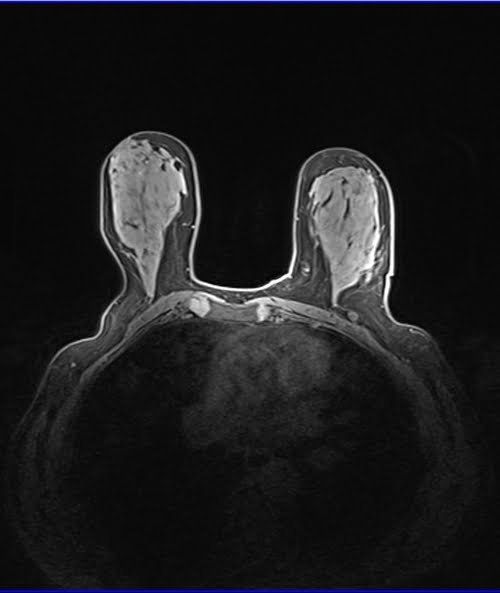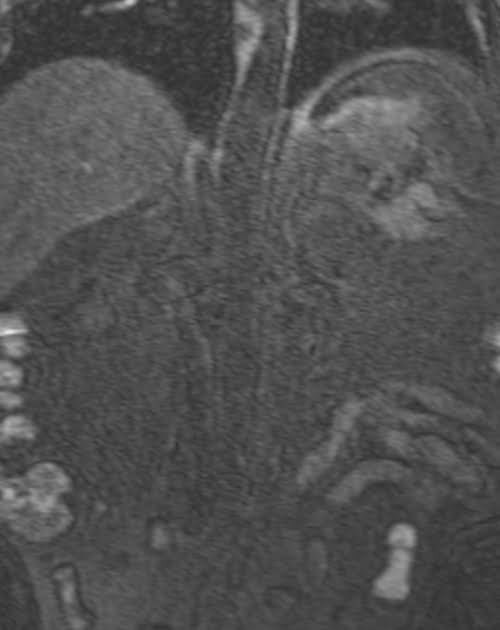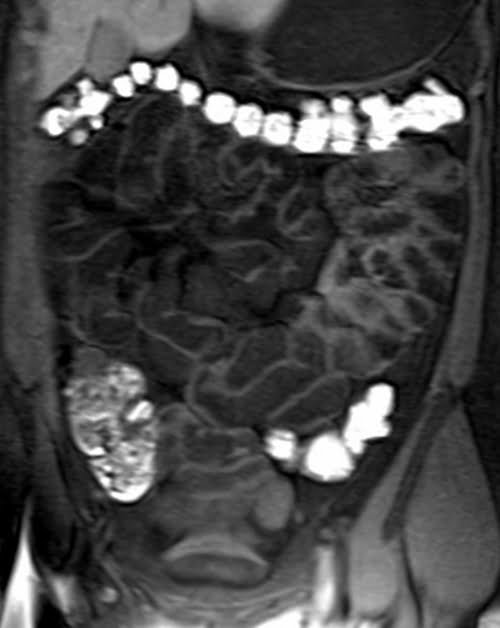FLASH(SPGR/T1-FFE/RF Spoiled SARGE/RSSG/FAstFE/S Tage/T1-FAST) Fat Sat
MRI image appearance
The easiest way to identify T1 FLASH fat-saturated images is to look for adipose tissues in the body, such as subcutaneous fat and fat in the bone marrow. Areas containing adipose tissues appear dark on T1 FLASH fat-saturated images. All other characteristics of the T1 VIBE fat-saturated images remain the same as the T1 FLASH images.
Tissues and their T1 FLASH fat saturated appearance
Fluids : – dark
Bone marrow : – dark
Muscles- gray
Kidneys :- gray
Liver :-bright gray
Spleen :- gray
Pancreas :- bright gray
Bowel walls :- gray
Prostate :- gray
Uterus:- gray
Moving blood : – dark
White matter : – whiter
Gray matter : – gray
Bone : – dark
Fat : – dark
Air : – dark
Use
- Very useful for small bowel imaging
- Very useful for breast imaging
- Very useful for pancreas imaging
- Very useful for kidney imaging
- Very useful for angiography imaging
- Very useful for liver imaging
- Very useful for kidneys imaging
- Useful for urography imaging
- Useful for chest imaging
- Useful for abdominal imaging
- Useful dynamic pelvis imaging
- Useful for extremity 3D imaging
Pathological appearance
Pathologies containing adipose tissue will manifest as areas of darkness on T1 FLASH fat-saturated images (for instance, lipomas). All remaining pathologies will exhibit a comparable appearance to standard T1-weighted images.
FLASH FAT SAT AXIAL SEQUENCE USED IN CHEST IMAGING

FLASH FAT SAT AXIAL SEQUENCE USED IN BREAST IMAGING

FLASH FAT SAT AXIAL SEQUENCE USED IN LIVER IMAGING

FLASH FAT SAT CORONAL SEQUENCE USED IN RENAL ANGIOGRAPHY IMAGING

FLASH FAT SAT CORONAL SEQUENCE USED IN SMALL BOWEL IMAGING



